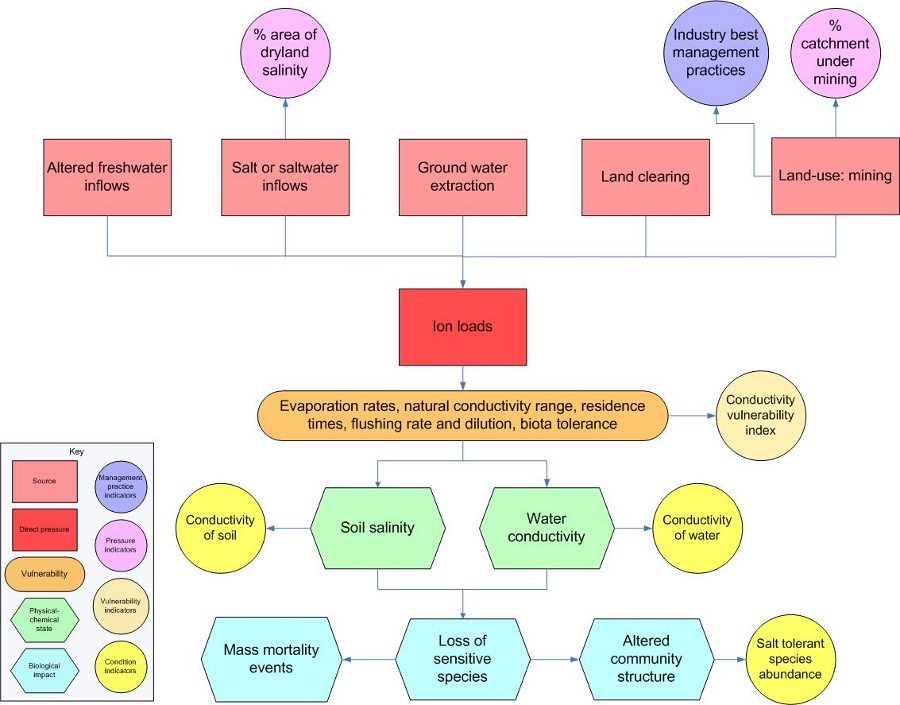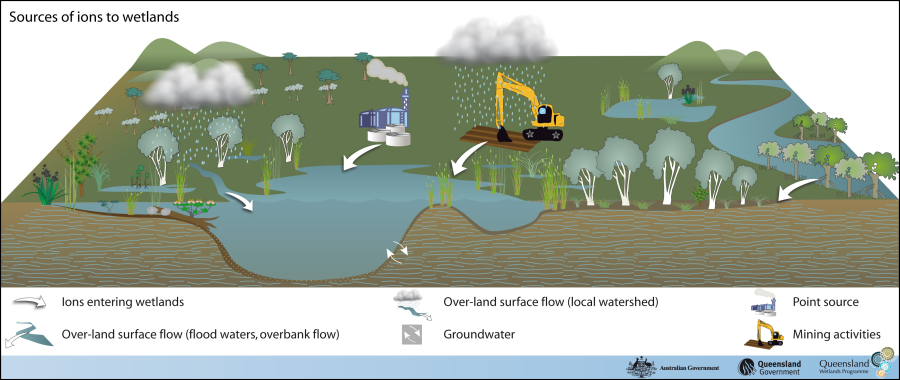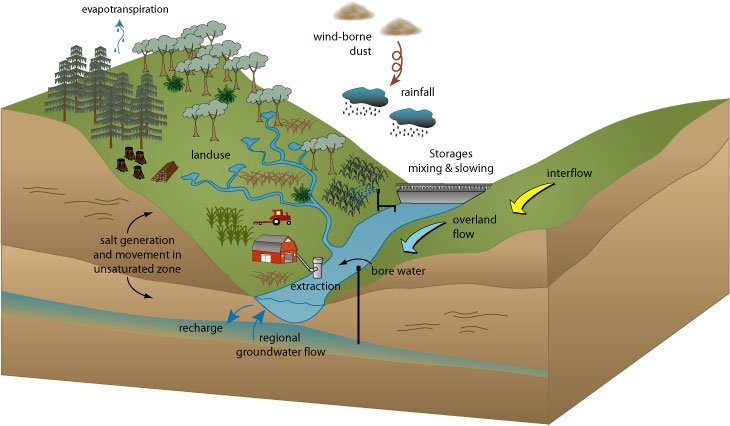|
|
Salinity – PressuresSalinity – PressuresFlow chart showing the major elements associated with conductivity management
Click on elements of the flow chart or select from the tabs below
Soluble salts are present in Australia's soils and are a remnant of geological history. Salts are also an integral part of the biochemistry of life in terrestrial and aquatic environments though for many freshwater aquatic animals exposure to high concentrations of salt can have toxic effects. Similarly, a lack of salt can also be detrimental to species in saline and estuarine environments. Impacts from salinity have been identified as one of Australia's most serious environmental issues. In areas already affected, salinity has devastated ecosystems resulting in massive loss of habitat, biodiversity, native vegetation and water resource value.[1]
Additional InformationAll about salinity information sheet although developed in NSW contains information relevant throughout Australia References
Last updated: 22 March 2013 This page should be cited as: Department of Environment, Science and Innovation, Queensland (2013) Salinity – Pressures, WetlandInfo website, accessed 8 May 2025. Available at: https://wetlandinfo.des.qld.gov.au/wetlands/management/pressures/lacustrine-palustrine-threats/conductivity/pressure.html |

 — Department of the Environment, Tourism, Science and Innovation
— Department of the Environment, Tourism, Science and Innovation




